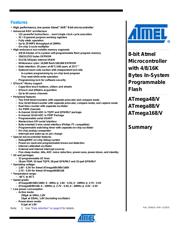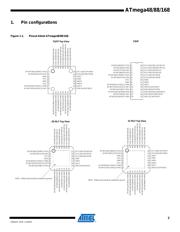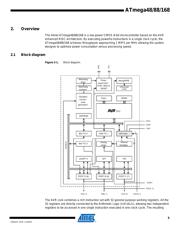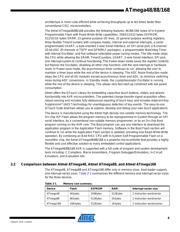Datasheet 搜索 > 开发套件 > ATMEL(爱特美尔) > ATMEGA328P-XMINI 数据手册 > ATMEGA328P-XMINI 数据手册 6/40 页
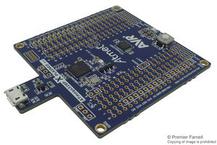
¥ 79.77
ATMEGA328P-XMINI 数据手册 - ATMEL(爱特美尔)
制造商:
ATMEL(爱特美尔)
分类:
开发套件
描述:
ATMEL ATMEGA328P-XMINI ATmega168微控制器Xplained迷你评估套件
Pictures:
3D模型
符号图
焊盘图
引脚图
产品图
页面导航:
导航目录
ATMEGA328P-XMINI数据手册
Page:
of 40 Go
若手册格式错乱,请下载阅览PDF原文件

6
2545US–AVR–11/2015
ATmega48/88/168
architecture is more code efficient while achieving throughputs up to ten times faster than
conventional CISC microcontrollers.
The Atmel ATmega48/88/168 provides the following features: 4K/8K/16K bytes of In-System
Programmable Flash with Read-While-Write capabilities, 256/512/512 bytes EEPROM,
512/1K/1K bytes SRAM, 23 general purpose I/O lines, 32 general purpose working registers,
three flexible Timer/Counters with compare modes, internal and external interrupts, a serial
programmable USART, a byte-oriented 2-wire Serial Interface, an SPI serial port, a 6-channel
10-bit ADC (8 channels in TQFP and QFN/MLF packages), a programmable Watchdog Timer
with internal Oscillator, and five software selectable power saving modes. The Idle mode stops
the CPU while allowing the SRAM, Timer/Counters, USART, 2-wire Serial Interface, SPI port,
and interrupt system to continue functioning. The Power-down mode saves the register contents
but freezes the Oscillator, disabling all other chip functions until the next interrupt or hardware
reset. In Power-save mode, the asynchronous timer continues to run, allowing the user to
maintain a timer base while the rest of the device is sleeping. The ADC Noise Reduction mode
stops the CPU and all I/O modules except asynchronous timer and ADC, to minimize switching
noise during ADC conversions. In Standby mode, the crystal/resonator Oscillator is running
while the rest of the device is sleeping. This allows very fast start-up combined with low power
consumption.
Atmel offers the QTouch Library for embedding capacitive touch buttons, sliders and wheels
functionality into AVR microcontrollers. The patented charge-transfer signal acquisition offers
robust sensing and includes fully debounced reporting of touch keys and includes Adjacent Key
Suppression
®
(AKS
®
) technology for unambigiuous detection of key events. The easy-to-use
QTouch Suite toolchain allows you to explore, develop and debug your own touch applications.
The device is manufactured using the Atmel high density non-volatile memory technology. The
On-chip ISP Flash allows the program memory to be reprogrammed In-System through an SPI
serial interface, by a conventional non-volatile memory programmer, or by an On-chip Boot
program running on the AVR core. The Boot program can use any interface to download the
application program in the Application Flash memory. Software in the Boot Flash section will
continue to run while the Application Flash section is updated, providing true Read-While-Write
operation. By combining an 8-bit RISC CPU with In-System Self-Programmable Flash on a
monolithic chip, the Atmel ATmega48/88/168 is a powerful microcontroller that provides a highly
flexible and cost effective solution to many embedded control applications.
The ATmega48/88/168 AVR is supported with a full suite of program and system development
tools including: C Compilers, Macro Assemblers, Program Debugger/Simulators, In-Circuit
Emulators, and Evaluation kits.
2.2 Comparison between Atmel ATmega48, Atmel ATmega88, and Atmel ATmega168
The ATmega48, ATmega88 and ATmega168 differ only in memory sizes, boot loader support,
and interrupt vector sizes. Table 2-1 summarizes the different memory and interrupt vector sizes
for the three devices.
Table 2-1. Memory size summary.
Device Flash EEPROM RAM Interrupt vector size
ATmega48 4Kbytes 256Bytes 512Bytes 1 instruction word/vector
ATmega88 8Kbytes 512Bytes 1Kbytes 1 instruction word/vector
ATmega168 16Kbytes 512Bytes 1Kbytes 2 instruction words/vector
器件 Datasheet 文档搜索
AiEMA 数据库涵盖高达 72,405,303 个元件的数据手册,每天更新 5,000 多个 PDF 文件

